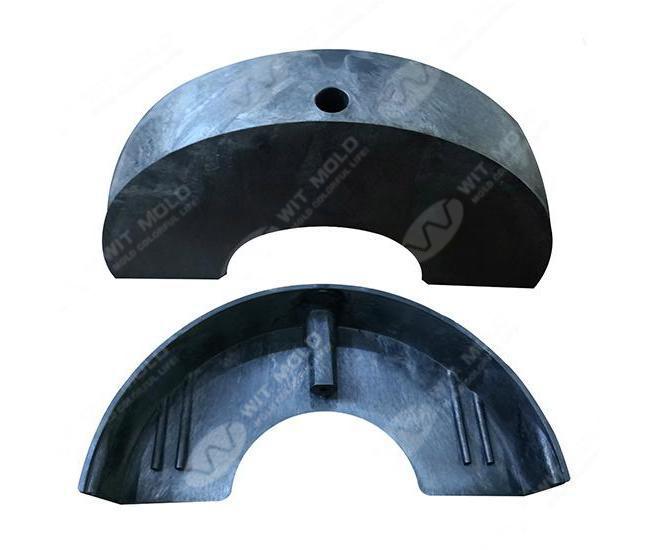Structural Foam Molding for Stronger, Lighter, and Cost-Effective Parts
Structural foam molding is an advanced manufacturing technique that combines strength, lightness, and cost-effectiveness to create high-quality parts. By utilizing a foaming agent during the molding process, manufacturers can produce components that are both durable and lightweight while keeping production costs low. This article explores how structural foam molding delivers these key benefits and discusses its applications in various industries.
What is Structural Foam Molding?
Structural foam molding is a manufacturing process where a combination of plastic material and a foaming agent are injected into a mold. The result is a part that has a solid outer surface and a foam-filled core. This structure allows the part to maintain strength and durability while reducing the overall weight. This technique is often used for large parts or products where reducing weight without sacrificing performance is a priority.
Key Advantages of Structural Foam Molding
Stronger Parts with Less Material
One of the biggest advantages of structural foam molding is its ability to create parts that are both strong and lightweight. By incorporating a foam core, parts are much lighter than traditional solid plastic components but still maintain their strength and integrity. For instance, a component that traditionally weighs 30% more can be reduced to 20-30% lighter with the use of structural foam molding, resulting in better performance and energy efficiency in the end product.
Cost-Effective Production
In addition to reducing material usage, structural foam molding also cuts down on production costs. The foaming agent reduces the amount of raw material required, leading to savings on material costs. Furthermore, the process uses lower injection pressures compared to traditional molding methods, which results in less energy consumption during production. Studies show that companies can save up to 30% on material costs when using structural foam molding compared to other methods.
Faster Production Times
Structural foam molding is known for its faster production cycles. Because it requires lower injection pressures, the molding process is less time-consuming, allowing manufacturers to produce more parts in a shorter amount of time. This can result in faster lead times for customers and increased throughput for manufacturers. A reduction in cycle time by even a few seconds can have a significant impact on overall production efficiency and profitability.

Real-World Applications of Structural Foam Molding
Automotive Industry
The automotive industry has widely adopted structural foam molding for creating lightweight and durable components. Parts such as bumpers, dashboards, and trim panels are often produced using this technique. By reducing the weight of these components, automakers can improve fuel efficiency and reduce overall vehicle weight, which is crucial for meeting environmental standards. In fact, manufacturers have reported a 25% reduction in the weight of certain parts, contributing to a 10% improvement in overall vehicle fuel efficiency.
Packaging Solutions
In the packaging industry, structural foam molding is used to produce strong yet lightweight packaging materials that protect products during transport. Structural foam molded packaging is often used for electronics, appliances, and delicate goods, where a balance between protection and weight is crucial. By using foam-molded packaging, companies can reduce the cost of shipping while ensuring the safety of their products. For example, one consumer electronics company reduced shipping costs by 20% while improving product protection by switching to structural foam packaging.
Consumer Goods Manufacturing
Structural foam molding is also beneficial for producing consumer goods like furniture, industrial tools, and household items. The lightweight and durable nature of foam-molded parts makes them ideal for products that require a high degree of strength but need to remain easy to handle and transport. For example, manufacturers have used structural foam molding to create ergonomic handles for tools and lightweight, sturdy furniture parts, offering an excellent combination of form and function.
Customer Case Study: Automotive Industry Savings
An automotive manufacturer used structural foam molding to produce a set of car bumpers. By switching from traditional molding techniques to structural foam, they were able to reduce the weight of the bumpers by 30%, which not only contributed to better fuel efficiency but also improved safety during collisions. In addition, the company saved 15% in material costs and reduced production time by 20%, resulting in both lower manufacturing expenses and faster delivery times to customers.
Why Choose Structural Foam Molding?
Structural foam molding offers an ideal solution for companies looking to produce strong, lightweight parts at a lower cost. Whether it’s for automotive components, packaging solutions, or consumer goods, the benefits of structural foam molding are clear: reduced weight, increased strength, lower material costs, and faster production cycles. By adopting this advanced manufacturing technique, businesses can meet market demands more efficiently while enhancing their bottom line.
In conclusion, structural foam molding is a powerful tool for manufacturers aiming to create high-performance parts without compromising on cost or production speed. With its numerous advantages, this technique is quickly becoming the go-to method for creating stronger, lighter, and more cost-effective components across a wide range of industries.Learn more
If you are interested in sending in a Guest Blogger Submission,welcome to write for us!

Comments
0